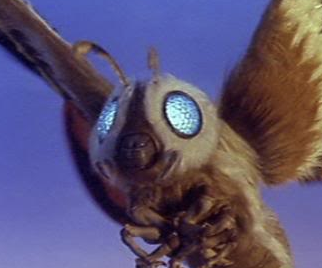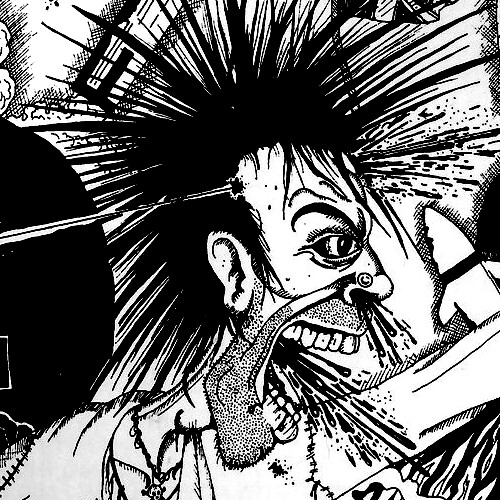The Brachinus crepitans, or bombardier beetle, measures just 2 cm but wields a powerful chemical defense. When threatened, it mixes hydroquinone and hydrogen peroxide inside its abdomen, triggering an exothermic reaction that reaches 100 °C. It ejects bursts of corrosive benzoquinones at 500 pulses per second, burning and repelling predators. This precise, repeatable mechanism has inspired research into reigniting gas turbines in aircraft under extreme conditions as low as –50 °C. Its internal valve and chamber system is now studied in chemical engineering and advanced biomimicry.
I’m from Buenos Aires, and I say kill 'em all.
I’d like to know more.
I’m doing my part!
I’m from Buenos Aires and didn’t know about the existence of this meme
TIL
You should watch Starship Troopers.
After knowing about the meme I looked up the movie and I’m sure I watched at least part of it when I was a kid, on air tv. I remembered the bug designs, which were the reason it caught my interest, I remember the action scenes with the bugs were fun, but I also remembered the plot and acting was a bit lacking.
I didn’t remember the “I’m from Bs. As.” line, I’m sure I would have found that absolutely hilarious even back then. Maybe I forgot or maybe I got too distracted during the several commercial breaks and missed some bits, can’t say
It’s a purposefully campy movie. It’s inspired by an actual fascist novel, but they’re making fun of it in the movie. It’s a really good watch, but you have to be fine with the camp.
Alternatively to the movie, or better in addition to, you should watch this.
Or this
Fun fact, bug planet scenes were all shot in Hells Half Acre, Wyoming
Especially if you like green eyes
You have to watch Starship Troopers. One of the best satirical military action films of all time.

Makes it’s own peroxide. That’s sort of hard core.
And uses that peroxide to crap explosions at things. Extremely hardcore.
Big deal, I have explosive craps all the time.
Have you ever spray-farted someone’s face off?
do you volunteer?
Nah man. If you can do that, we’re good. You don’t make an enemy of someone with that type of skill…
I’m under court order not to answer that question.
Ahh. But have you evolved your tailbone into a pilot light?
Not yet, ask me again in like a million years.
You know I should have had the doctor put a spark plug in when he built me an artifical ass
How the hell did they not evolve wings and reach mach 5
They started with wings and the survivors soon ditched them.
cowards!
How does it survives to its own attack?
Simple, it ducks before it shoots, like in the picture. ez
If y’all have not seen The Oatmeal’s bit that includes a great piece on the bombadeer beetle, it’s a treat:
GOD made that butthole!
According to this theory, every action that I take in this body is a direct result of evolution; which: according to my research on humans . Is entirely correct.
[Teasing] 212°F is 100°C, for anyone or anymany using proper measurement systems for temperature.
Or about 373° Kelvin for the truly enlightened.
Or 0° Delisle if you just want to flex about knowing obscure temperature scales.
I don’t think Kelvin is an obscure flex, but I had never heard of Delisle. That is a weird one! Thanks for sending me down a little rabbit hole.
Yes that is a flex tbh
Or about 672 Rankine for the truly deranged
Only a couple more million years of natural evolution before we beetles capable of jet-powered flight…
Assblasters!
Has anyone been hit by one of these guys?
At the very least the person the finger in the stock image belongs to
the only known survivor
I’m sure someone has. Not me tho
Says online it can cause mild eye and skin irritation to humans, but nothing serious.
Heh, it sprays its own head with it. Still some space for improvement.
No wonder it can’t keep its cool.
They can shoot it in different directions. This one’s just not very smart.
They nip at his ankles, but he simply kicks them away
#inspo #goals #😤😤😤
deleted by creator
Wish I could come up with a spicy food joke.
You can do it! I believe in you!
Bear down, it’ll sting but it’s totally worth it of you survive.
How can something like this evolve?
Here’s an attempted explanation
Quinones are produced by epidermal cells for tanning the cuticle. This exists commonly in arthropods. [Dettner, 1987] Some of the quinones don't get used up, but sit on the epidermis, making the arthropod distasteful. (Quinones are used as defensive secretions in a variety of modern arthropods, from beetles to millipedes. [Eisner, 1970]) Small invaginations develop in the epidermis between sclerites (plates of cuticle). By wiggling, the insect can squeeze more quinones onto its surface when they're needed. The invaginations deepen. Muscles are moved around slightly, allowing them to help expel the quinones from some of them. (Many ants have glands similar to this near the end of their abdomen. [Holldobler & Wilson, 1990, pp. 233-237]) A couple invaginations (now reservoirs) become so deep that the others are inconsequential by comparison. Those gradually revert to the original epidermis. In various insects, different defensive chemicals besides quinones appear. (See Eisner, 1970, for a review.) This helps those insects defend against predators which have evolved resistance to quinones. One of the new defensive chemicals is hydroquinone. Cells that secrete the hydroquinones develop in multiple layers over part of the reservoir, allowing more hydroquinones to be produced. Channels between cells allow hydroquinones from all layers to reach the reservior. The channels become a duct, specialized for transporting the chemicals. The secretory cells withdraw from the reservoir surface, ultimately becoming a separate organ. This stage -- secretory glands connected by ducts to reservoirs -- exists in many beetles. The particular configuration of glands and reservoirs that bombardier beetles have is common to the other beetles in their suborder. [Forsyth, 1970] Muscles adapt which close off the reservior, thus preventing the chemicals from leaking out when they're not needed. Hydrogen peroxide, which is a common by-product of cellular metabolism, becomes mixed with the hydroquinones. The two react slowly, so a mixture of quinones and hydroquinones get used for defense. Cells secreting a small amount of catalases and peroxidases appear along the output passage of the reservoir, outside the valve which closes it off from the outside. These ensure that more quinones appear in the defensive secretions. Catalases exist in almost all cells, and peroxidases are also common in plants, animals, and bacteria, so those chemicals needn't be developed from scratch but merely concentrated in one location. More catalases and peroxidases are produced, so the discharge is warmer and is expelled faster by the oxygen generated by the reaction. The beetle Metrius contractus provides an example of a bombardier beetle which produces a foamy discharge, not jets, from its reaction chambers. The bubbling of the foam produces a fine mist. [Eisner et al., 2000] The walls of that part of the output passage become firmer, allowing them to better withstand the heat and pressure generated by the reaction. Still more catalases and peroxidases are produced, and the walls toughen and shape into a reaction chamber. Gradually they become the mechanism of today's bombardier beetles. The tip of the beetle's abdomen becomes somewhat elongated and more flexible, allowing the beetle to aim its discharge in various directions.Why did you use a code block for a quote?
idk why but I kind of like to read it with random keywords highlighted and every apostrophe toggling the effect
I didn’t do it on purpose, I just copied and pasted
I know it but I haven’t seen a good way of doing a long quote. Do I need the > on every single line? I’ve no idea why this time it put it into a code block, maybe something to do with my app (sync). The comment actually looks fine in a code block on my app so I thought it was good enough. Didn’t realise how shit it looked on desktop until you brought it up.
I know it but I haven’t seen a good way of doing a long quote.
Just gotta do the start of each paragraph.
This is an example of a paragraph
This is paragraph 2
This is paragraph 3 without the leading
This is paragraph 4
The comment actually looks fine in a code block on my app so I thought it was good enough. Didn’t realise how shit it looked on desktop until you brought it up.
Each application will handle markdown differently, I would just stick with what is documented by Lemmy devs.
I tend to use them because they’re easier than quotes.
Newlines won’t terminate the block but with quotes you have to manually insert a
at each linebreak.No you don’t
You just have to make sure to terminate the line with two spaces. Unless you have a different markdown renderer than the web interface and most apps.Or does line break mean empty lines to you?
I understand you can use double space to use a markdown linebreak and mitigate the need to do it.
However if you’re copy pasting a quote this still has to be done manually by the person copying the text.
In which case manually putting the
on empty lines is easier but still more time consuming than using a code block.This is for all flavors of markdown I’ve used including github flavored.
I feel like being part of a setup that was created for this comment. That’s more than I ever expected. Thank you very much.
The same way every living thing evolve. Through millon or billion of years of mutations and natural selection.
Proof that god hates us, we didn’t get explosive fart cannons.
we didn’t get explosive fart cannons
speak for yourself
Right? Casual.
not impressive, i can have explosive diarrhea and blow up the toilet as well
“Help him, help him,” Dobbs was sobbing. “Help him, help him.”
“Help who? Help who?” Yossarian called back. “Help who?”
“The bombardier, the bombardier,” Dobbs cried. “He doesn’t answer. Help the bombardier, help the bombardier.”
“I’m the bombardier,” Yossarian cried back at him. “I’m the bombardier. I’m all right. I’m all right.”
“Then help him, help him,” Dobbs wept. “Help him, help him.”
Where are the Snowdens of yesteryear?
Spilled the secret on the flight to Avignon. Today’s Snowdens have it easier. They spill less unpleasant secrets, too.



















